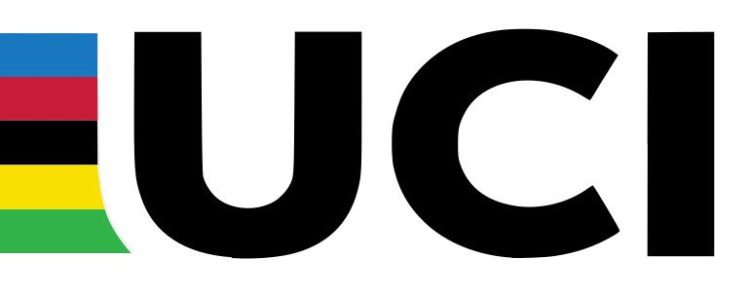Hydrate Like a Pro – Dialing In Your Cycling Hydration Strategy
– By Christopher Schwenker
Learn how to calculate your sweat rate to optimize performance and avoid the life-threatening risks of an improper hydration strategy.
Every cyclist knows they must drink when they ride, but have you ever wondered why? What is the proper amount to drink to optimize performance, and is drinking too much dangerous?
Finding the proper balance is elusive despite the advice of our coaches and cycling mates. We know never to roll off or begin a turbo session without freshly filled bidons, but the rest is guesswork.
Insufficient hydration can lead to dehydration, which not only hampers our performance but can also pose serious health risks, especially in extreme cases. While the impact on performance is still a matter of debate, the undeniable fact is that excessive dehydration can have severe adverse health consequences.
However, dehydration is not the only risk. Overhydration, a potentially life-threatening hidden risk to endurance athletes, also deserves our attention and caution.
The Science Behind Proper Hydration
Several studies have shown that dehydration hinders cycling performance. A recent study tested seven male cyclists. The results showed that dehydration decreased performance and impaired the subjects’ ability to regulate their body temperature. Compared to the well-hydrated group, dehydrated cyclists finished a 5-kilometer time trial slower and produced less power.
Another study examined the effects of mild dehydration (1-2% body mass loss) on cyclists, regardless of thirst sensation. This study involved eleven male competitive cyclists. When mildly dehydrated, the cyclists were slower, produced less power, had a higher core temperature, and perceived exertion was higher.
Based on this research and other similar studies, a 2% decrease in body mass is the accepted guideline recognized by researchers and fitness professionals.
For example, for a 140 lb. (63.5 kg) athlete, the difference between pre- and post-exercise body mass is 2.8 lb. (1.27 kg). For a 175 lb. (79.4 kg) athlete, it is 3.5 lb. (1.59 kg), and for a 200 lb. (90.7 kg) athlete, it is 4 lb. (1.8 kg).

Cycling Hydration: Drinking When Thirsty vs. Individualized Planned Drinking
The topic of cycling hydration is complex, but two hydration strategy models have emerged and grown acceptance in the endurance community.
The hydration strategy, Drinking When Thirsty, involves consuming fluid only when an athlete senses thirst. Studies show that the intensity of thirst often doesn’t represent the degree of dehydration and isn’t consistent with the volume of fluid lost when riding. Therefore, many performance professionals move toward a more analytical approach.
With Individualized Planned Drinking, athletes can ditch the guesswork and personalize their hydration strategy. The American College of Sports Medicine endorses this approach, which is particularly appealing to data-driven athletes.
This method involves measuring an athlete’s sweat rate to create a customized hydration plan. Athletes aim to replace most, but not all, of their sweat losses to prevent overhydration and weight gain. This systematic approach ensures optimal fluid intake based on an objective measure, not just thirst.
How to Calculate Your Sweat Rate
You can calculate how much fluid you lose during a ride or training session by following these steps:
- Weight Loss: Measure your weight before and after your ride (unclothed). Subtract your post-ride weight from your pre-ride weight to determine how much body weight you lost.
- Total Fluid Loss: Add your lost weight to the fluids you consumed during the ride (water, gels, etc.), representing your total sweat loss.
- Sweat Rate: Divide your total fluid loss by the duration of your ride (in hours) to determine your hourly sweat rate.
Let’s say you rode for 1.5 hours after determining that your pre-ride weight was 140 lbs and that you weighed 139.5 pounds after the ride. You lost 0.5 pounds during the ride (140 – 139.5 lbs), which translates to 0.227 kilograms (0.5 lbs * 0.454 kg/lb). You consumed 22 ounces of fluid (0.64 liters) during the ride.
Therefore, your total fluid loss is 0.867 liters (0.227 kg + 0.64 L). Finally, divide your total fluid loss by the ride duration (1.5 hours) to get a sweat rate of approximately 0.58 liters per hour (0.867 liters / 1.5 hours).
The Cycling Hydration Rule of Thumb
If math isn’t your thing, use this as a rough estimate. The average person sweats approximately 0.8 to 1.4 liters, or up to 48 oz., during an hour-long ride. That equates to between one and two large bottles per hour.
Of course, there is tremendous variation among athletes and conditions, indoors vs. outdoors. That is why having a general idea about your sweat rate is vital. By calculating sweat rate, a cyclist can develop an objective hydration strategy and avoid the potentially catastrophic risk of overhydration.
Over-Hydration Has Significant Negative Health-Related Consequences
Drinking too much when we ride has significant health consequences and adversely affects performance, according to Professor of Exercise Metabolism Dr. Adam Upshaw.
“It is often strict adherence to traditional hydration strategies that give rise to in-performance muscle cramping, bloating, feeling of illness, low urine output (somewhat surprising, I know), and hyponatremia. The low blood sodium levels associated with hyponatremia can lead to headaches, confusion, and dizziness.
As a result, I would advise athletes to drink to thirst primarily. There is no need to drink large volumes of fluid leading up to race day, and in most cases, there is certainly no need to drown the body in fluids and salt tablets during endurance competition. For most, the simplest (and often safest) recommendation for maximizing performance as it relates to hydration is to drink to thirst.”
During exercise, overhydration dilutes our blood. This imbalance in sodium levels causes water to move from the bloodstream into cells, potentially leading to the life-threatening condition of Exertional Hyponatremia (EHN) as the cells swell.
EHN is a rare but severe risk for healthy athletes. As blood sodium levels approach 130-135 mmol/L, symptoms like lightheadedness, nausea, and swelling may occur. Below 130 mmol/L, the situation worsens dramatically, with headaches, vomiting, and breathing difficulties becoming possible. In severe cases, swelling around the brain can lead to confusion or seizures.
With this in mind, developing sound cycling hydration habits is essential.
Develop Basic Practical Hydration Guidelines
Here are a few things to consider before your next ride, race, or training session to dial in your hydration strategy.
Pre-Hydration: Aim to be fully hydrated before your ride by drinking to thirst throughout the hours, not minutes, leading up to your event. Monitor your urine color – pale yellow indicates good hydration.
Hydration During Exercise:
- High-Intensity Events (under 1 hour): Drink when thirsty, aiming for a few sips every 10 minutes.
- Longer Events (over 2 hours): Use a sweat rate-based plan. If unsure, start with a structured plan and adjust based on thirst and urine color.
Overhydration: Be mindful of overdrinking, especially during more extended efforts. Listen to your thirst and adjust intake accordingly.
Finding the Right Strategy: Experiment with different hydration strategies under varying conditions to see what works best for you.
Drink Wisely!
A solid hydration strategy is not just beneficial. It’s essential. With a systematic approach and awareness of the critical elements, all cyclists can take charge of their performance and health by making purposeful decisions about how, when, and why we drink.
About the Author
After over twenty years as director of his private physical therapy practice, Chris stepped away to pursue his passion for virtual cycling and writing. He founded TheZommunique.com, the leading source of independent cycling esports journalism, is a frequent contributor to Cycling Weekly, Cycling News, and road.cc, and co-hosts The Virtual Velo Podcast. He cycled 3,900 miles across the US in 2022 to support his virtual cycling non-profit, The DIRT Dad Fund.






















